Langdon Hall is regarded as one of the most coveted getaways in Ontario. Its country heritage charm is incomparable. More than just a relaxing retreat, it has also become a culinary jewel, drawing both global and local travellers. Under the leadership of Executive Chef Jason Bangerter, every morsel is intentional—every touch tells a story. A recent collaboration with Chef Vicky Cheng of Hong Kong was a culinary journey and reunion at its finest.
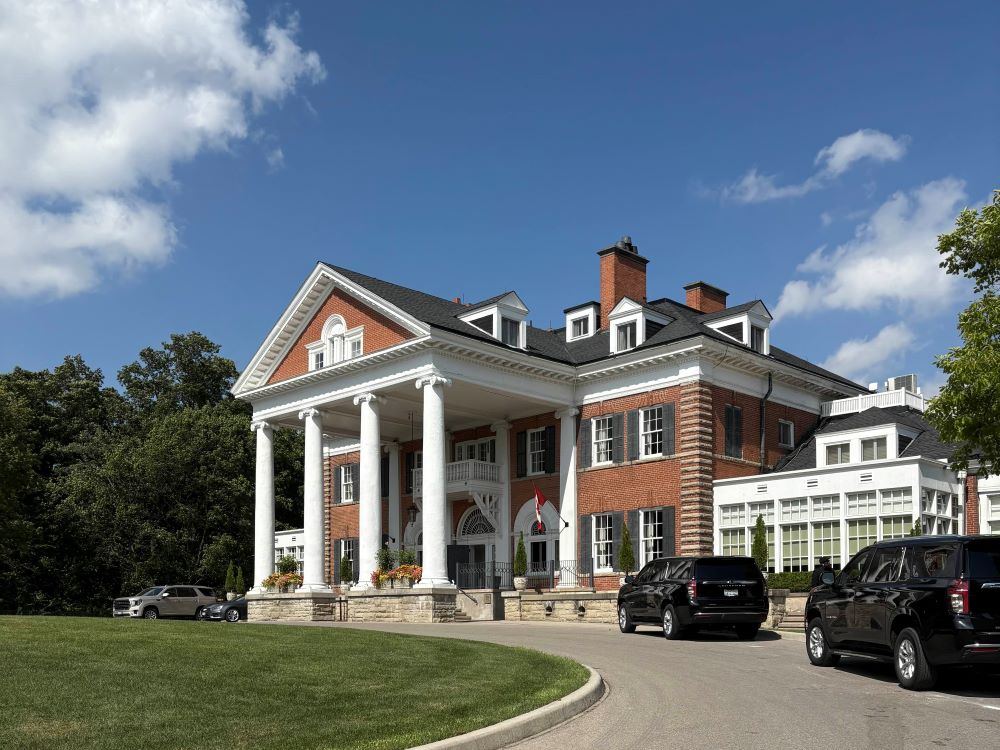
A Walk Through History
Stepping onto Langdon Hall property feels very special. Not because Drake visited for his album photoshoot, but more so for its rich history. In the late 1800s, Matthew Wilks, a successful American businessman, sought to create a summer retreat for his family and friends. He purchased land in Cambridge, Ontario, and expanded the estate over the years. His youngest son, Eugene Langdon Wilks, later acquired an adjoining property, and together with his wife, hired an architect to bring Langdon Hall to life.
Multiple generations of the family enjoyed the residence until 1980. At that point, architect William Bennett and Mary Beaton purchased the beautiful estate, envisioning a dream country house hotel. After extensive renovations, Langdon Hall reopened in 1989 and has since seen two expansions. Today, the Relais & Châteaux property boasts 60 guest rooms and is celebrated as the epitome of quiet luxury—a “home away from home” for its guests.
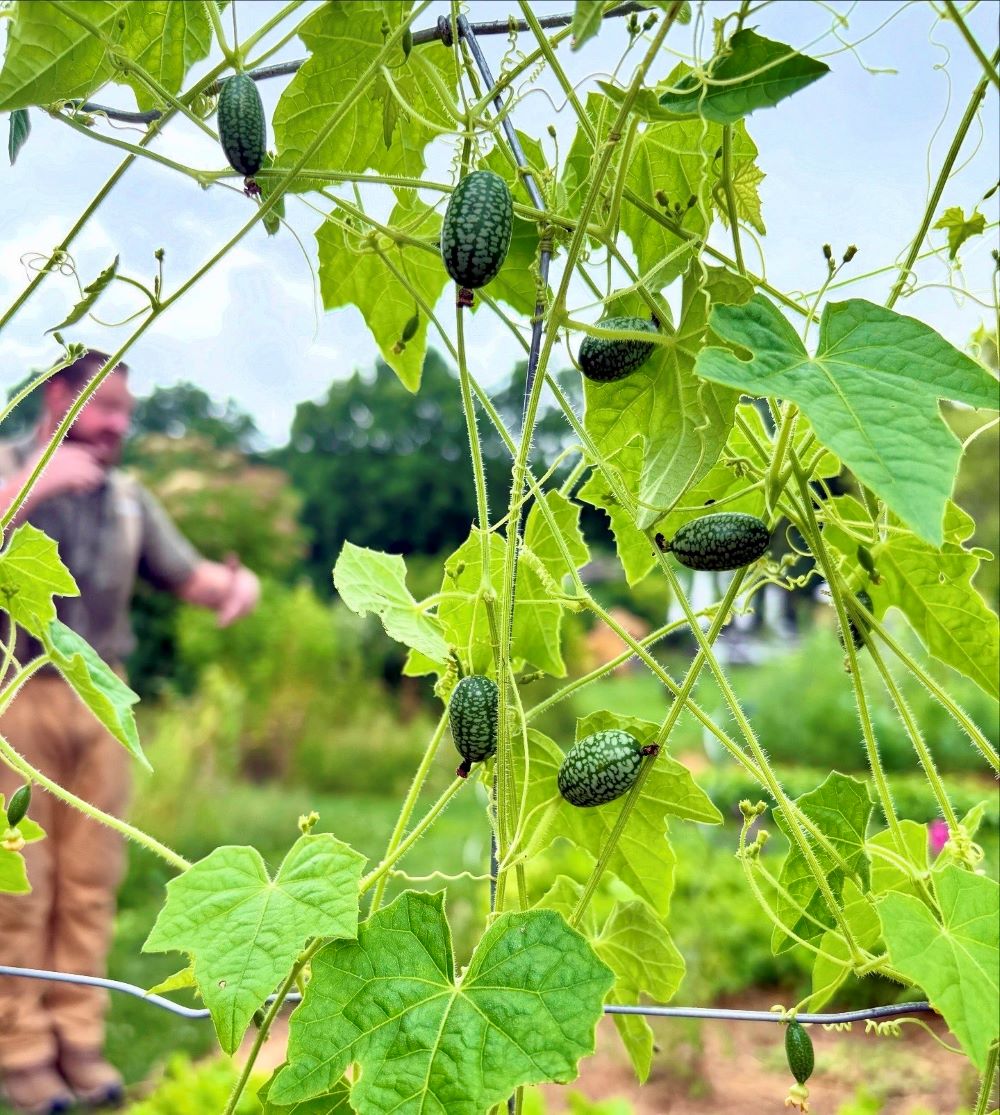
Gardens Also Tell a Story
A tour of Langdon Hall’s gardens is special whether it’s your first visit or your hundredth. The English-style gardens are spotted with sunlit florals swaying gently in the breeze, a breathtaking backdrop for the stately house. Originally, the gardens also served as a food source for the Wilks family and their guests, with vegetables and herbs growing alongside the flowers. That tradition continues today, with the gardens and greenhouses supplying the hotel’s award-winning kitchen.
The gardens’ origins can be traced back to 1902. Designed by John Charles Olmsted—son of Frederick Law Olmsted, and famed for such projects as New York’s Central Park, Boston Gardens, and Montreal’s Mount Royal. Inspired by Eugene’s love of English estate gardens, the property reflects his appreciation for beauty and cultivated landscapes.
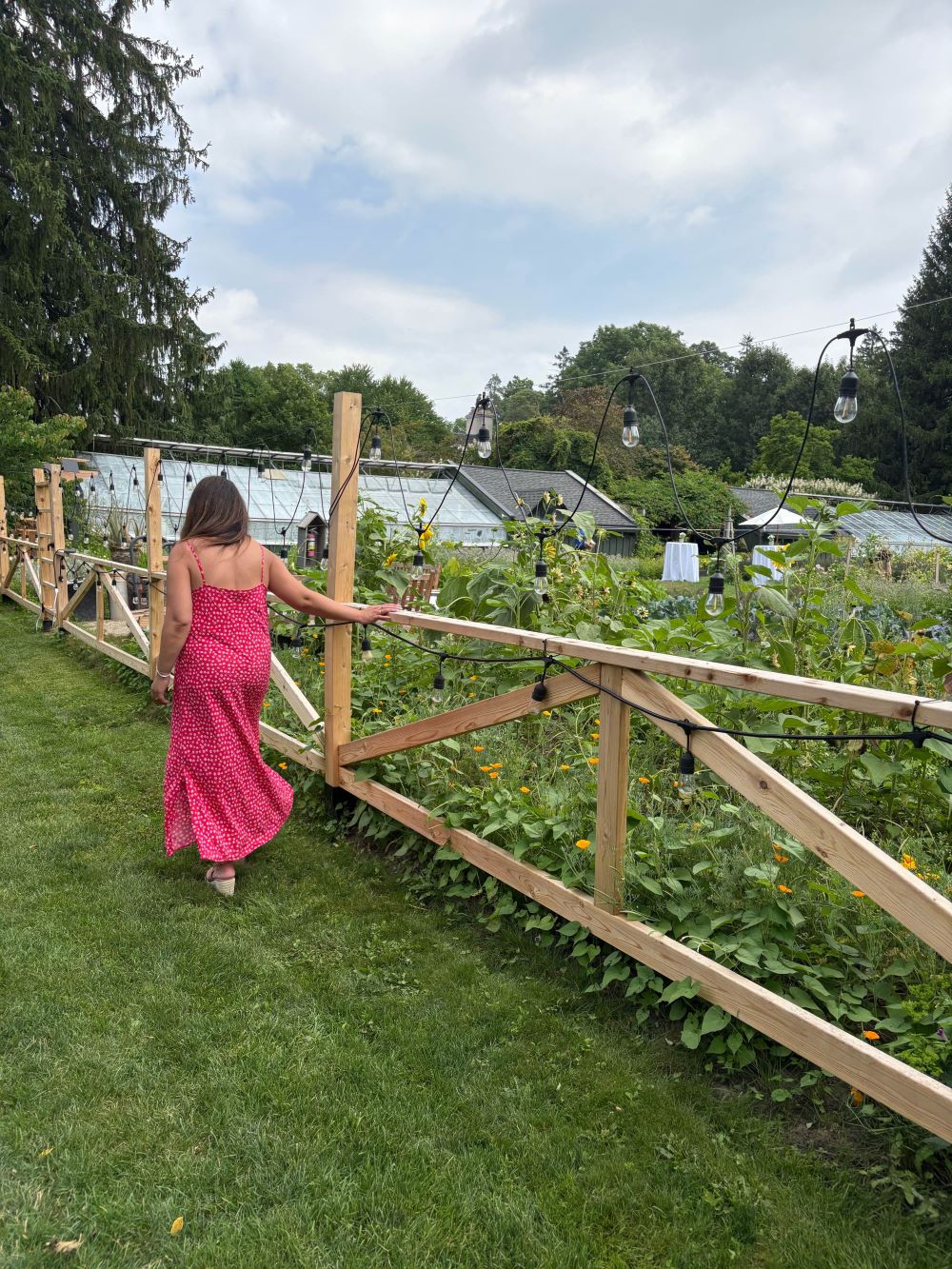
Visitors can find original plantings thriving today. The striking Camperdown Elm, standing proudly outside the main dining room, remains a centrepiece. Walnut trees also dot the property—the largest, planted first, was envisioned as a golden autumn highlight. Even now, the sap from these trees is tapped to produce a syrup used in Langdon Hall’s kitchens.
In the 1980s, Bennett and Beaton enlisted their friend Dr. Leslie Laken, Director of the Royal Botanical Gardens, to help rejuvenate the gardens and hired a team of expert gardeners to nurture the property to it’s fullest. Today, the team remains closely tied to Chef Bangerter’s kitchen and all-seasons menu planning. His culinary philosophy, “taste of place,” ensures that everything grown on the property—whether edible or used in plating—finds a place in Langdon Hall’s menus.
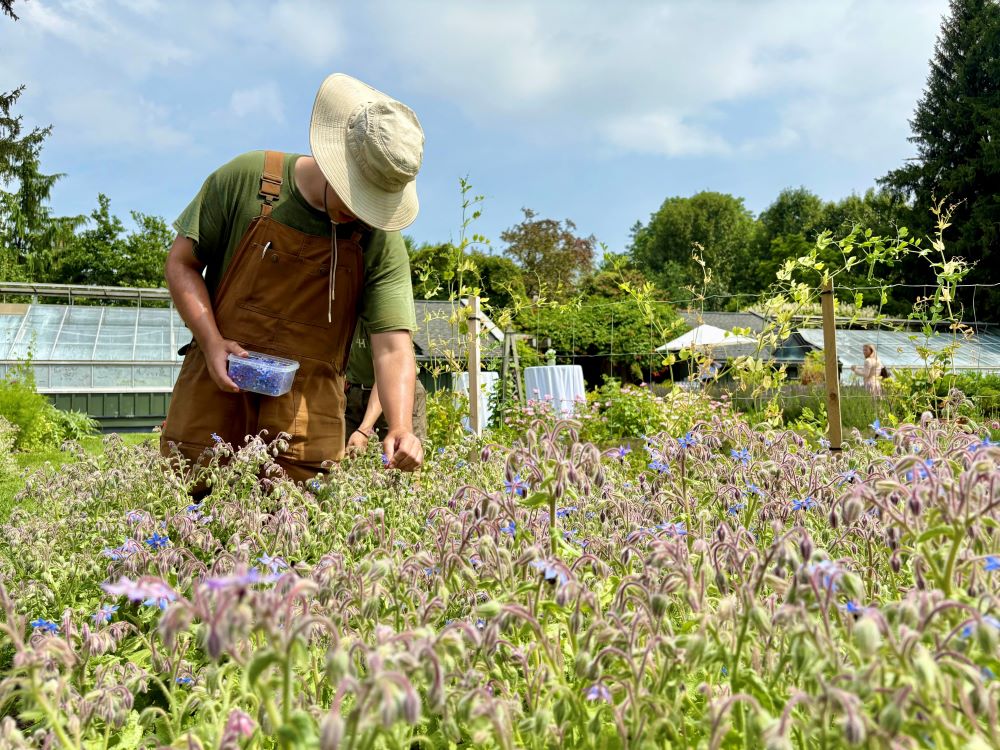
And with multiple menus spanning breakfast, lunch, dinner, weddings, poolside dining, and special events, this harmony between garden and kitchen requires careful planning. During this most recent visit, I also learned about tropical ginger and a variety of kiwi fruit that are grown here. Kiwi! Then, there were the cute and tiny cucamelons, which we sampled fresh off the vine — a pretty little burst of summer flavour I’m now inspired to add to my own garden in the city.
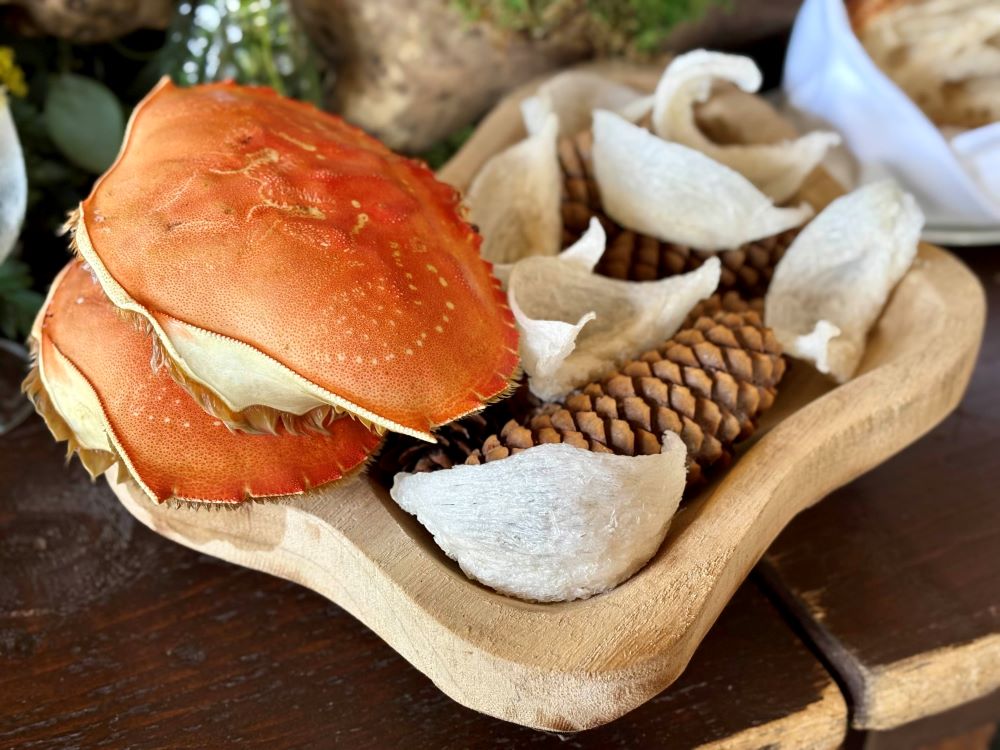
The Culinary Vision of Chef Jason Bangerter
Chef Jason Bangerter is one of Canada’s most respected culinary leaders, known for his global experience and numerous accolades. Langdon Hall’s restaurant is on the Michelin-recommended list and has also been named on Canada’s 100 Best Restaurants 2024 as Fifth Best and Canada’s Best Destination Restaurant. Warm, gracious, and deeply passionate, Chef Bangerter brings excitement and authenticity to every dish. If you’ve ever tried his Royal Truffle Soup, you know how exceptional his dishes are. I’m still craving it now!
Since joining Langdon Hall in 2013, he has elevated its reputation by embracing local and seasonal ingredients grown on the property and weaving them into menus that tell a story. Dining here is not just a meal—it’s an experience that invites guests to slow down, savour, and connect with the land.
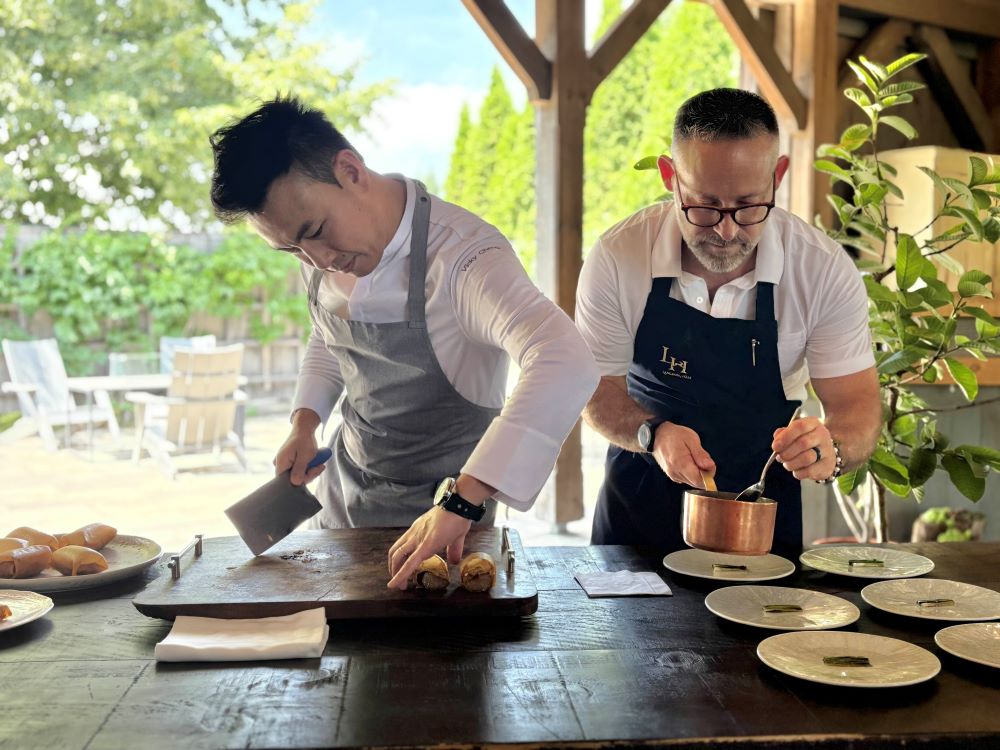
A Reunion in the Kitchen: Chef Vicky Cheng
Many acclaimed chefs have collaborated with Bangerter at Langdon Hall, but a recent partnership with Chef Vicky Cheng was particularly meaningful—it was a reunion 20 years in the making.
Born and raised in Toronto, Chef Cheng trained in classic French cuisine and once worked alongside Bangerter, sharpening the skills that shaped his career. In 2011, he returned to Hong Kong after working in New York and opened VEA, a 25-counter seats fine dining restaurant fusing Chinese culture with French techniques. He had mentioned that he found himself cooking French food but always craved Asian flavours. Back then, there was nothing like what Cheng was doing. “Usually it’s Japanese with French, but French Chinese, not so much. And we were so happy that we did it because it opened up a lot of doors and opportunities for many young chefs to realize that actually Chinese cuisine can be elevated internationally,” said Cheng. In 2016, VEA earned a coveted Michelin star, propelling Cheng onto the global stage as one of Hong Kong’s top 10 chefs.
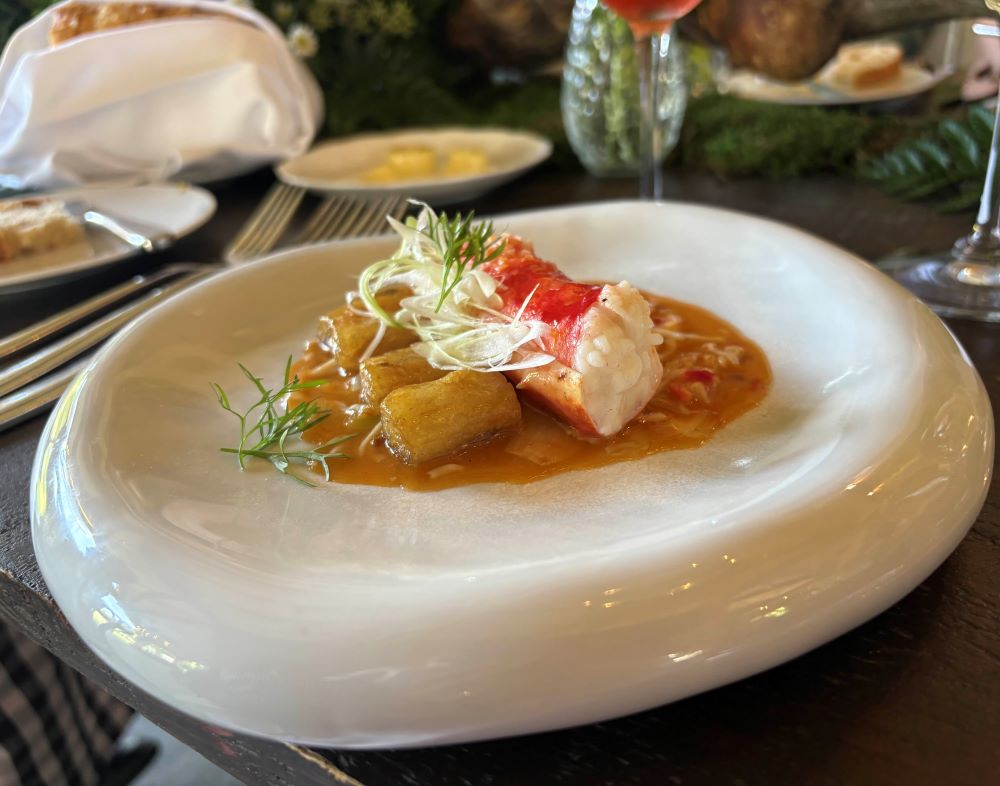
Then, in 2021, he launched Wing, a restaurant dedicated to refining Chinese cuisine that is built on tradition, and exceptional ingredients—presented with a modern lens. It’s where each main ingredient is highlighted, fine tuned, and celebrated. And for us, raised in Chinese homes, it’s unlocked memories of family dinners and a deep respect for our heritage.
The collaboration with Bangerter at Langdon Hall was more than a showcase of East-meets-West culinary mastery—it was a celebration of friendship, history, and artistry.
It all began when Cheng was Bangerter’s apprentice chef. He recalled that about 25 years ago, while still in high school, he discovered his passion for cooking. “I didn’t know how to start or where to start, and my high school had placed me at Frankie Tomato’s. My young and naïve self asked the teacher, ‘Can you put me somewhere a little bit more fancy?’” said Cheng.
Cheng went on to spend six and a half years learning under Bangerter. “It was a lot of hours, a lot of work, and plenty of time scrubbing oysters. I still remember those days, but Jason was my mentor, and even 25 years later, I still credit him the most.”
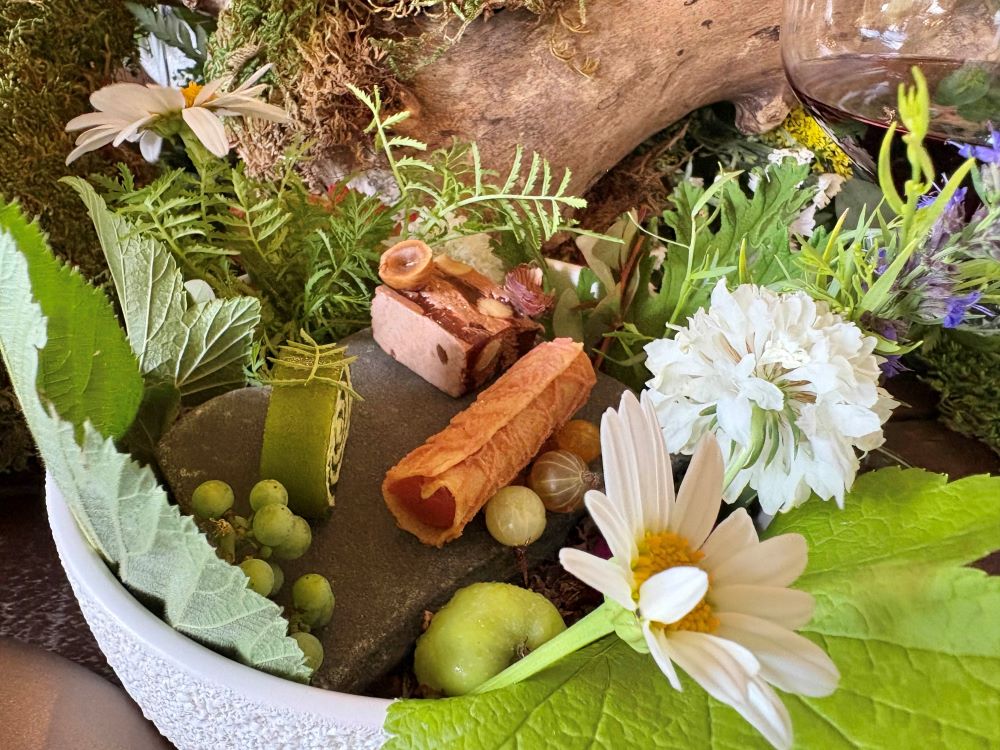
Although Cheng went on to work with many chefs, he still considers Bangerter the one who nurtured him from the very beginning. “When I didn’t know how to cut anything, or even which brand of knife to buy, he would go with me, teach me, and guide me. He not only taught me how to cook, but also how to be humble, how to be a person, and how not to waste food,” Cheng explained. He added that he continues to use many of the lessons he learned from his time as Bangerter’s apprentice—both in his cooking and in how he now teaches his own apprentices.
“I think some things you never forget in life. Chef Jason had the highest standards for everything, and I’m grateful he was my first mentor when I knew nothing,” said Cheng.
At this reunion event, the two chefs presented a culinary collaboration that wove the flavours of Canadian terroir with the refined traditions of Chinese cuisine—a harmonious expression of past and present, rooted in respect, creativity, and evolution.
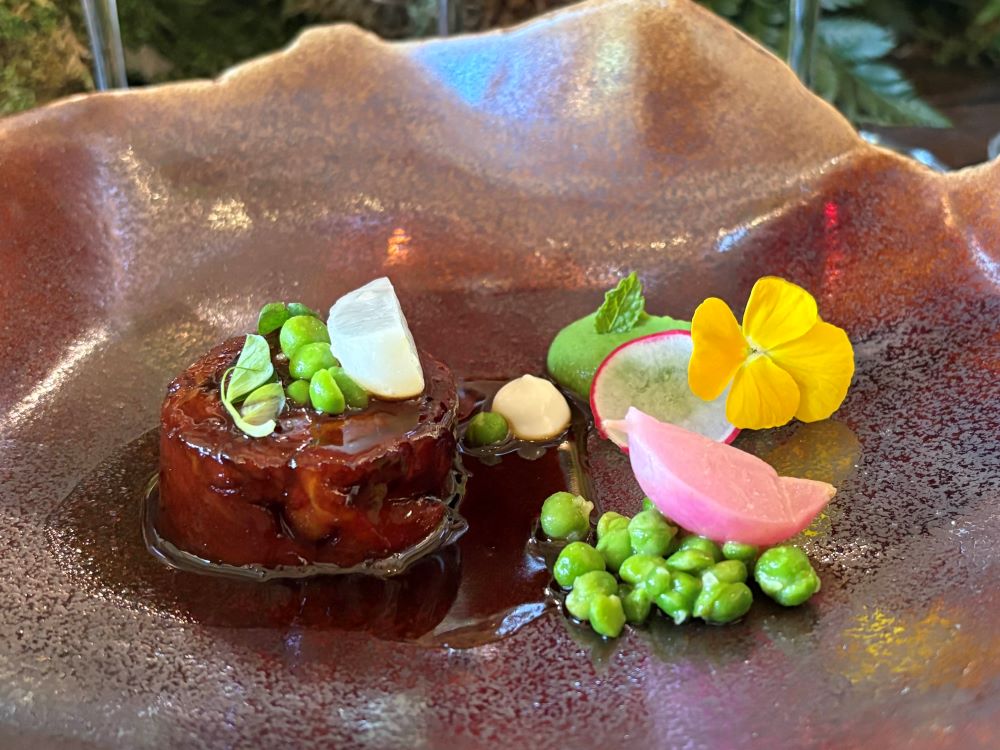
Cheng cooked with signature Hong Kong ingredients such as dried abalone, prized fish maw, and delicate bird’s nest, while Bangerter highlighted our cherished Canadian and Ontario produce. Though Langdon Hall carries more of a French ambience, the menus flowed seamlessly. Interestingly, Bangerter had recently cooked in Cheng’s Hong Kong kitchen—where space was much tighter. Cheng joked about how his team was in awe of the vast Langdon Hall kitchens and grounds, calling it a luxury that felt like a dream.
Hong Kong, as many know, is a vibrant culinary destination attracting both locals and global travellers eager to experience everything from humble street food to exceptional fine dining. The city boasts over 17,000 restaurants and eateries, from bustling street fare to dim sum houses and contemporary tasting menu establishments, and is currently home to 76 Michelin-starred restaurants.
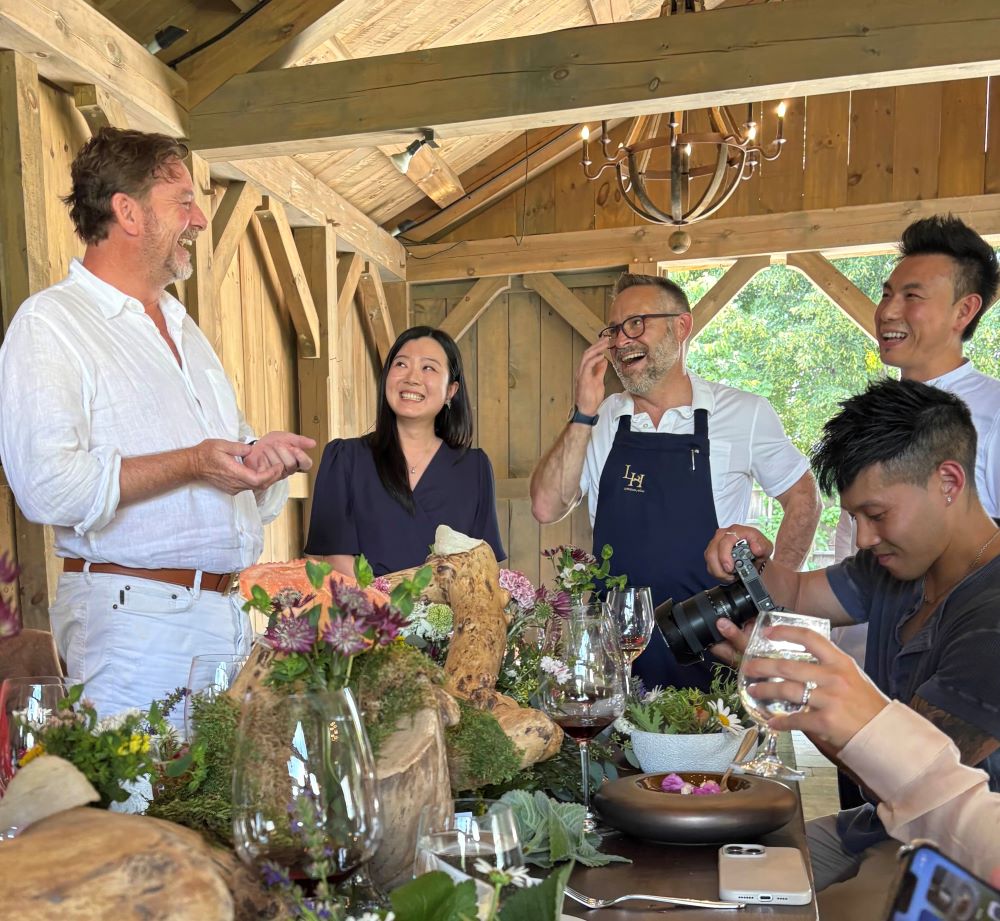
Traditional Chinese cuisine covets ingredients such as centuries-aged dried seafood and abalone that can cost thousands of dollars. Even though I was born and raised here in Canada, I am often reminded that in Chinese culture, all of our traditional dishes we eat have medicinal properties and health benefits—there’s always a reason behind the dish and to never take what we eat for granted.
One highlight of the event was a Cantonese-style dish: steamed egg white custard with a soup made from Canadian crab shells in a master stock, topped with luxurious bird’s nest—a traditional ingredient renowned for its nourishing qualities. A Google search can help you understand more. I had heard through my grandparents about the benefits of this golden bird’s nest for healthy skin, vitality and longevity. But only recently learned about Japanese scientists who’ve found the nests to also contain antiviral properties that may help protect against influenza.
Sea cucumber was another featured ingredient. Cheng emphasized the importance of mastering dried seafood in Chinese cuisine. Valued in Chinese culture as highly as truffles or caviar are in the West, sea cucumber is rare and labour-intensive to prepare, requiring careful rehydration. At the event, it was transformed into a soufflé-like spring roll with a crisp bite that was otherworldly.
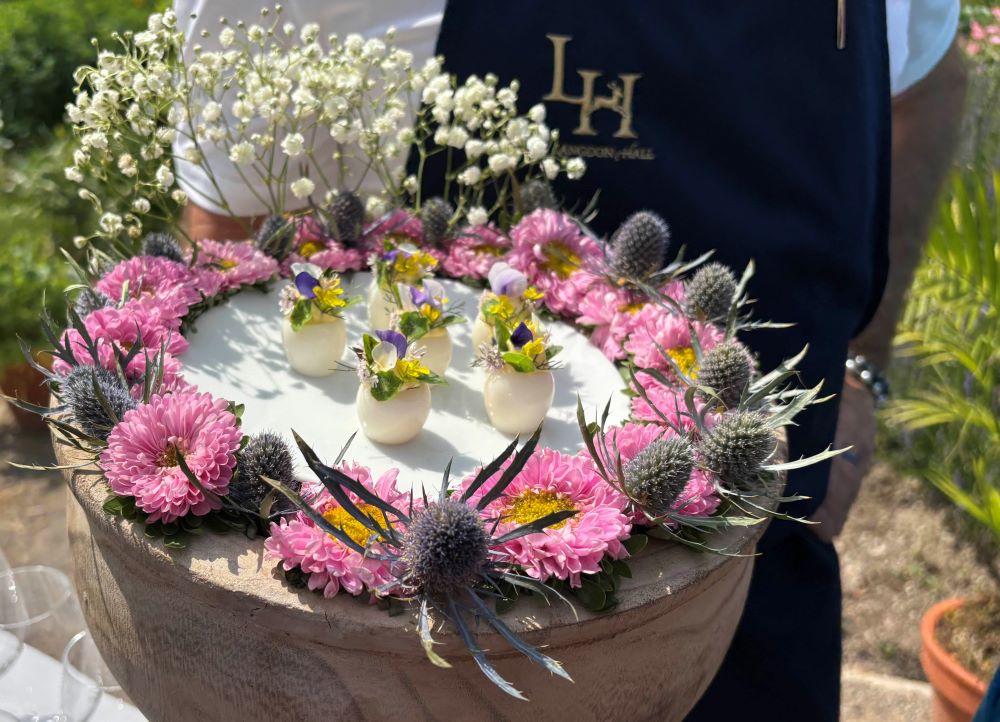
Bangerter, in turn, celebrated his Canadian heritage with dishes inspired by his childhood summers, including memories from the Eastern shores, where he spent time with his grandparents. “We would always go to the lobster docks and eat whatever the fishermen brought back. We’d even have lobster races and dig for clams,” he recalled.
But it wasn’t all just about the ingredients. We learned also about the process of cooking and the importance of preparation. Freshness in cooking from raw, particularly shellfish, is key to texture and umami — important in both east and west cuisines but crucial to the authenticity of Chinese cuisine, even though often it’s more convenient to prepare some dishes in advance. Same could be said for the Langdon Hall gardens, where the most perfect and freshest herbs and vegetables are plucked daily for optimum flavour.
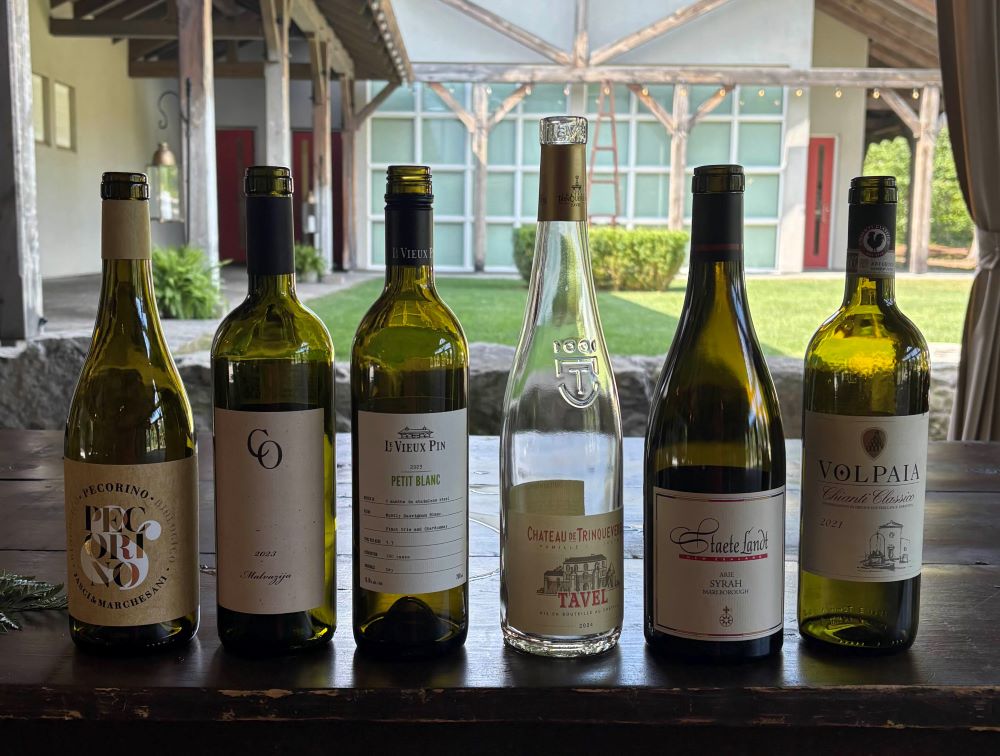
Perhaps the most exquisite finale to the multi-course dining event was a heritage rose dessert made with petals from a 1898 planted rose bush on the property. “This rose was planted here when the house was built in 1898, and it’s actually been added to the Slow Food International Archive. When you taste these roses, it’s the true essence and flavour of rose,” said Bangerter. He went on to also tell us they’ve also made a jam with the petals, which was used as the base of the dessert with just sugar, a bit of lemon juice and the rose petals along with fruit from the garden, including goji berries, golden raspberries and red raspberries. It was finished with gem marigold and just as beautiful visually as it was delicious.
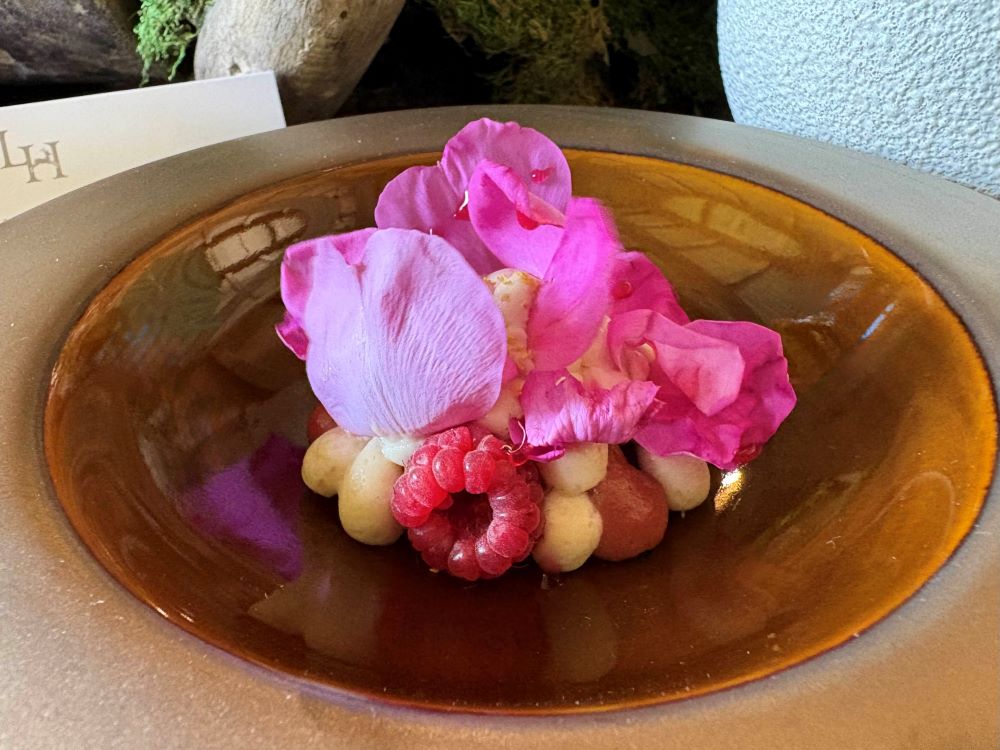
This experience made me even more excited to bump Hong Kong to the top of my own culinary journey to explore further. Until then, I’ll savour the memories I have of this beautiful experience.
Thank you to Chef Jason Bangerter, Chef Vicky Cheng, Langdon Hall, and The Hong Kong Tourism Board for the unforgettable day!

